Related Research Articles

Edinburgh is the capital city of Scotland and one of its 32 council areas. The city is located in southeast Scotland and is bounded to the north by the Firth of Forth estuary and to the south by the Pentland Hills. Edinburgh had a population of 506,520 in mid-2020, making it the second-most populous city in Scotland and the seventh-most populous in the United Kingdom. The wider metropolitan area had a population of 912,490 in the same year.

Lothian is a region of the Scottish Lowlands, lying between the southern shore of the Firth of Forth and the Lammermuir Hills and the Moorfoot Hills. The principal settlement is the Scottish capital, Edinburgh, while other significant towns include Livingston, Linlithgow, Bathgate, Queensferry, Dalkeith, Bonnyrigg, Penicuik, Musselburgh, Prestonpans, Tranent, North Berwick, Dunbar, Whitburn and Haddington.
The Scottish National Liberation Army (SNLA), nicknamed the Tartan Terrorists, is a Scottish nationalist paramilitary group which aims to bring about Scottish independence from the United Kingdom. The group was founded in 1980 by Adam Busby, a former soldier from Paisley after the 1979 devolution referendum, which the organisation claims was fixed.
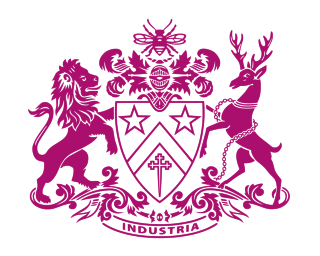
Fettes College is a co-educational private boarding and day school in Craigleith, Edinburgh, Scotland, with over two-thirds of its pupils in residence on campus. The school was originally a boarding school for boys only and became co-ed in 1983. In 1978 the College had a nine-hole golf course, an ice-skating rink used in winter for ice hockey and in summer as an outdoor swimming pool, a cross-country running track and a rifle shooting range within the forested 300-acre grounds. Fettes is sometimes referred to as a public school, although that term was traditionally used in Scotland for state schools. The school was founded with a bequest of Sir William Fettes in 1870 and started admitting girls in 1970. It follows the English rather than the Scottish education system and has nine houses. The main building, called the Bryce Building, was designed by David Bryce.

Lothian and Borders Police was the territorial police force for the Scottish council areas of the City of Edinburgh, East Lothian, Midlothian, Scottish Borders and West Lothian between 1975 and 2013. The force's headquarters were in Fettes Avenue, Edinburgh.

Redford Cavalry and Infantry Barracks is a military installation located on Colinton Road, near the Edinburgh City Bypass, east of the suburb of Colinton in Edinburgh, Scotland. The barracks are set to close in 2029.

Iain Cumming Gray is a Scottish politician who served as Leader of the Scottish Labour Party from 2008 to 2011. He was the Member of the Scottish Parliament (MSP) for the East Lothian constituency from 2007 to 2021, having previously represented Edinburgh Pentlands from 1999 to 2003. A former aid worker and teacher of mathematics and physics, Gray was first elected to the Scottish Parliament in 1999 as MSP for the Edinburgh Pentlands constituency, which he lost to Leader of the Scottish Conservative Party David McLetchie in 2003. Gray was returned to Holyrood in 2007 as MSP for East Lothian. Following Wendy Alexander's resignation as Leader of the Scottish Labour Party in 2008, Gray stood at the subsequent leadership election, and was elected with a 57.8% share of the vote in the second round.

Linlithgow is a town in West Lothian, Scotland. It was historically West Lothian's county town, reflected in the county's historical name of Linlithgowshire. An ancient town, it lies in the Central Belt on a historic route between Edinburgh and Falkirk beside Linlithgow Loch. The town is situated approximately 20 miles (32 km) west of Edinburgh.
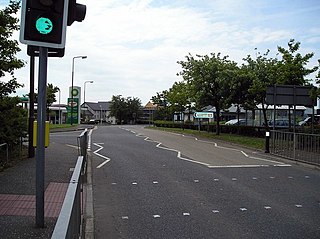
Deans is a small community within the town of Livingston in West Lothian, Scotland. Deans is situated in the northern part of Livingston, The western area of Deans was formerly known as Livingston Station, as it is the location of former oil works and a railway station. Many people who have lived in this area for a long time often refer to it as such. In 2010 the population of Deans was 3,641.
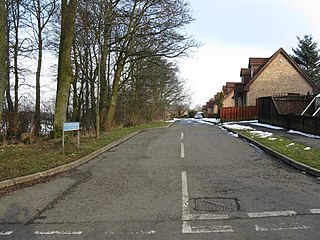
Dechmont is a small village located near Uphall, West Lothian in Scotland. Bangour Village Hospital is located to the west of Dechmont. It has an approximate population of 989 people. Its postal code is EH52. An alleged alien encounter took place in 1979 in the nearby Dechmont Woods.

The World's End Murders is the colloquial name given to the murder of two girls, Christine Eadie, 17, and Helen Scott, 17, in Edinburgh, in October 1977. The case is so named because both victims were last seen alive leaving The World's End pub in Edinburgh's Old Town. The only person to stand trial accused of the murders, Angus Robertson Sinclair, was acquitted in 2007 in controversial circumstances. Following the amendment of the law of double jeopardy, which would have prevented his retrial, Sinclair was retried in October 2014 and convicted of both murders on 14 November 2014. He was sentenced to life imprisonment with a minimum term of 37 years, the longest sentence by a Scottish court, meaning he would have been 106 years old when he was eligible for a potential release on parole. He died at HM Prison Glenochil aged 73 on 11 March 2019. Coincidentally, he died on the same day the BBC's Crimewatch Roadshow programme profiled the murders.
Prostitution in Scotland has been similar to that in England under the State of Union, but since devolution, the new Scottish Parliament has pursued its own policies.
The Battle of Nesbit Moor was an engagement fought in August 1355 between forces of the Kingdom of Scotland and the Kingdom of England.
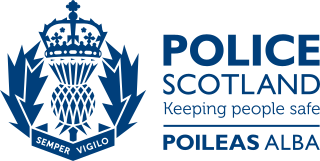
Police Scotland, officially the Police Service of Scotland, is the national police force of Scotland. It was formed in 2013, through the merging of eight regional police forces in Scotland, as well as the specialist services of the Scottish Police Services Authority, including the Scottish Crime and Drug Enforcement Agency. Although not formally absorbing it, the merger also resulted in the winding down of the Association of Chief Police Officers in Scotland.
The statutory notice system in Edinburgh, Scotland, was instituted after a series of incidents in the 1990s culminating in a serious accident in 1999 in which a person was killed. Statutory notices require homeowners to carry out repairs using council-approved builders to protect the architecture of a World Heritage city. This system is unique to Edinburgh.

The Scottish Fire and Rescue Service is the national fire and rescue service of Scotland. It was formed by the merger of eight regional fire services in the country on 1 April 2013. It thus became the largest fire brigade in the United Kingdom, surpassing the London Fire Brigade.

Bun-sgoil Taobh na Pàirce is a Gaelic medium primary school in Edinburgh, Scotland. Administered by the City of Edinburgh Council, the school is open to any parents in the city or surrounding areas who wish to have their children learn and be educated through Scottish Gaelic. The opening of Edinburgh's first dedicated Gaelic school on 16 August 2013, after many years of campaigning by parents and supporters, was hailed as a "landmark day" for the Scottish capital.

The Scottish Diaspora Tapestry is a large embroidery, 153 metres (502 ft) in length, crafted from 305 panels that were embroidered in 34 countries. It was the second major tapestry project to have originated from the Prestoungrange Arts Festival in Prestonpans, East Lothian, Scotland. Work on the panels began in 2012. A version of the tapestry was exhibited across Scotland in 2014 for the Homecoming. The tapestry was displayed in locations around Western Europe the following year. November 2015 was the first time that all 305 panels were shown together. In 2016 and 2017 the tapestry toured across Australia and Canada and returned to Edinburgh to go on display in May 2017.
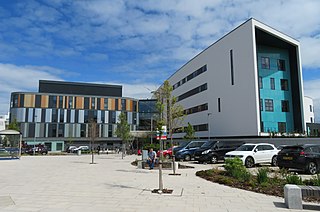
The Royal Hospital for Children and Young People is a hospital that specialises in paediatric healthcare based in Edinburgh, Scotland. The hospital replaced the Royal Hospital for Sick Children in Sciennes. It forms part of the Royal Infirmary of Edinburgh campus in the Edinburgh BioQuarter at Little France. The facility provides care for children and young people from birth to around 16 years of age and is managed by NHS Lothian.
References
- ↑ "Scot brokered TV deal". The Scotsman. 6 February 2003. Archived from the original on 18 July 2012. Retrieved 3 March 2012.
- ↑ "Fettesgate: 'Magic Circle' spells panic in the police". The Scotsman. Scotsman.com. 24 February 2009. Retrieved 3 March 2012.
- ↑ "Jersey police chief expects abuse case to take years". The Scotsman. Scotsman.com. 4 March 2008. Retrieved 3 March 2012.
- ↑ "Journalist receives Fettesgate apology". Herald. Herald Scotland. 21 February 1996. Retrieved 3 March 2012.
- ↑ Smith, W A Nimmo; Friel, ] D (26 January 1993). The Report on an Inquiry into an Allegatíon of a Conspiracy to Pervert the Course of justíce in Scotland. HMSO.